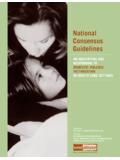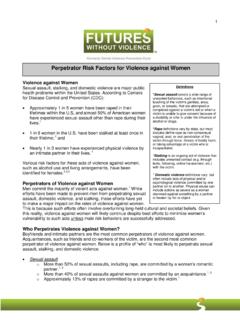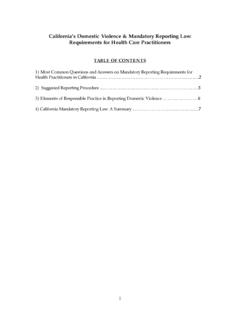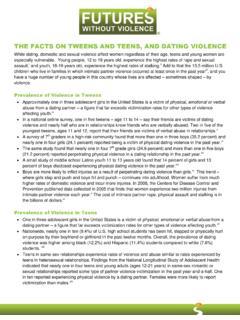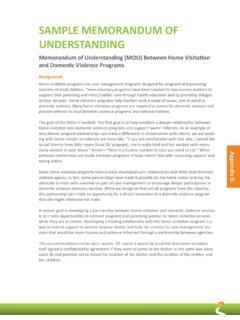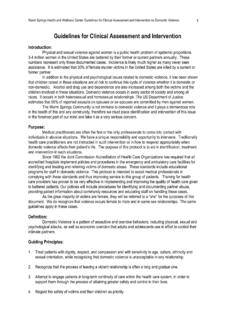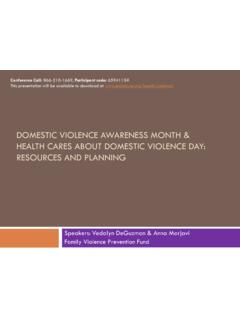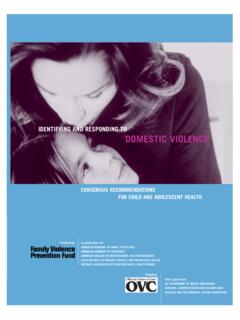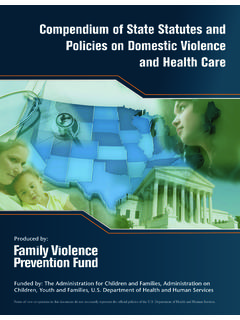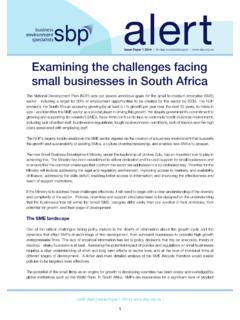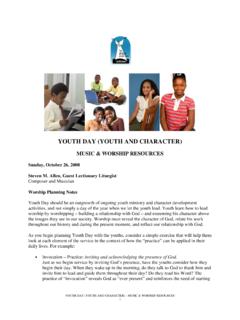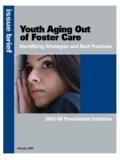Transcription of EMERGING ISSUES FACING TWEENS AND TEENS
1 EMERGING ISSUES FACING TWEENS AND TEENS Young people, 12 to 19 years old, experience the highest rates of rape and sexual assault,i youth ,18 to 19 years old, experience the highest rates of stalking,ii and million children live in families in which intimate partner violence occurred at least once in the past Every day TEENS and TWEENS deal with ISSUES that members of older generations never contemplated How do I get help if my boyfriend/girlfriend is pressuring me to send a sexy text? Should I break up with my boyfriend/girlfriend on Facebook?
2 What do I do if someone is spreading online rumors about me? The pervasiveness of technology has created an environment unlike any other that has become a platform for TEENS to navigate their sexuality and first sexual EMERGING ISSUES like sexting, sexual coercion and bullying create serious challenges for millions of youth . Technology, Electronic Dating Abuse, and Sexting In a study conducted by the Associated Press (AP) and MTV with an online panel of young persons (14-24 years old) that is representative of the population, 41% of respondents who were in a relationship had experienced some form of digital abuse and nearly one quarter (24%)
3 Said they always or sometimes felt that their partner was constantly pressuring them to check-in by e-mail, phone calls and One in four TEENS in a relationship say they have been called names, harassed or put down by their partner through cell phones and One in ten TEENS (11-18 years old) said a romantic partner had prevented them from using a cell phone, 6% said their romantic partner had posted something publicly online to make fun of, threaten, or embarrass them, and of boys and of girls said they had received a threatening cell phone message from their romantic More than one-quarter ( ) of publicly viewable profiles of adolescents on a teen dating web site contained risk-related content (text and/or photographs) about drugs, alcohol, cigarettes, sex, and violence.
4 The most frequently mentioned risk behaviors were sex-related ( of the profiles).viii Among TEENS (13-18 years old) that have sent or received sexts, the majority of messages were sent to (60%) or received by (75%) One in three 14-24 year olds have engaged in some form of sexting. Fifteen percent had sent naked videos or photos of themselves and one-third (33%) had received texts or online messages with sexual text. Approximately one half of those who sent a nude photo felt pressured to do Young persons who have sexted are four times more likely to consider suicide compared to peers who have not Among TEENS , ages 11-18 years old, of boys have received naked/semi-naked pictures of someone from their school in the past 30 days and sent naked/semi-naked pictures of themselves to others in the past 30 One in five teen girls and one in ten younger teen girls (13 to 16)
5 Have electronically sent or posted nude or semi-nude photos or videos of themselves. Even more teen girls, 37 percent, have sent or posted sexually suggestive text, email or IM (instant messages). xiii Forced Sex and Sexual Coercion Among high school students nationwide, of females and of males have been forced to have sexual intercourse when they did not want Nearly half (45 percent) of girls in an online study said they know a friend or peer who has been pressured into having either intercourse or oral One in ten 15-year-old girls who dated someone within the past six months reported experiencing sexual coercion by a dating partner.
6 Xvi Middle school and high school students, both male and female, who experienced peer sexual coercion were more likely to report alcohol or drug use at last sexual intercourse, have more than one sexual partner, and have had or caused a Girls who experienced physical or sexual dating violence were nearly 5 times more likely than their nonabused peers to have been coerced into not using a condom during sex, were times more likely to be fearful of requesting condom use, and were more than 5 times more likely to report negative consequences of asking their partner to use a condom.
7 Xviii Among 7th to 12th graders, of girls and of boys reported unwanted sexual experiences that were perpetrated by a Approximately one-third of boys ( ) and girls ( ) with bi-sexual partners reported a history of forced According to data from the Illinois youth Risk Behavior Survey, a history of having been forced to have sexual intercourse decreased the likelihood of using condoms during sex among Latino high school Bullying, Cyberbullying, and Sexual Harassment Students, both male and female, who reported that they had perpetrated physical dating violence.
8 Were nearly five times more likely to report perpetrating physical peer In a cross-sectional study with 369 middle school and 315 high school youth , bully-victims (students who were both bullied and who bullied others) reported significantly more physical and emotional dating violence victimization compared to three other bullying subtypes: uninvolved, victims, and Victims of bullying also reported the highest rates of being victims of sexual harassment by their In a large survey (n=4400) with a random sample of 11 to 18 year-olds, youth who were cyberbullied were times more likely to experience electronic dating violence compared to peers who were not youth who perpetrate dating violence are significantly more likely to engage in cyberbullying compared to peers who do not perpetrate dating In a longitudinal study with 1391 middle school students (grades 5-8), bullying perpetration at baseline was a significant predictor of sexual harassment perpetration for girls and One in three (34%)
9 Boys and 28% of girls, in 5th through 8th grade reported making sexual comments to other students in the past In a large cross-sectional survey, adult men (ages 18 to 35 years old) who bullied others at school when they were children were times more likely to be physically and/or sexually abusive to an intimate partner in the past i Truman, Jennifer and Rand, Michael. 2010. Criminal Victimization, 2009. Department of Justice Bureau of Justice Statistics. Available at ii Baum, Katrina, Catalano, Shannan, Rand, Michael and Rose, Kristina.
10 2009. Stalking Victimization in the United States. Department of Justice Bureau of Justice Statistics. Available at iii McDonald, R, Jouriles, E, Ramisetty-Mikler, S. et al. 2006. Estimating the Number of American Children Living in Partner-Violent Families. Journal of Family Psychology 20(1): 137-142. iv Associated Press and MTV. 2011. AP-MTV Digital Abuse Study. Available at v Associated Press and MTV. 2011. AP-MTV Digital Abuse Study. Available at vi Liz Claiborne and TRU. 2007. Tech Abuse in Teen Relationships Study.
